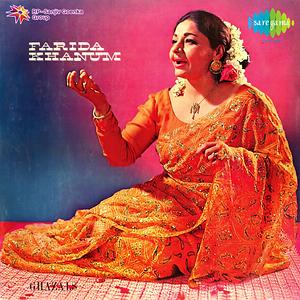

The diva sang one soulful ghazal after another.

She mesmerised the audience, had them in raptures and applauding endlessly, asking for more. The Siri Fort Auditorium was packed to the rafters. I was very fortunate to see her perform live in New Delhi.

Her fans are on both sides of the border. This is borne out by not only her sellout records and stage shows, but also the awards she has been bestowed with - the Pride of Performance Award in 1970 (Pakistan), Hilal-i-Imtiaz in 2005 (the second-highest civilian award in Pakistan) and the Hafiz Ali Khan Award in 2005 (India). Her contribution to the genre has been immense. The Queen of Ghazal’s songs are redolent with emotion and virtuosity. Every song bears her unique identity and soul. To name a few, Woh Ishq Jo Humse Rooth Gaya, Maine Pairon Mein Payal To Bandhi Nahin, Raat Jo Tum Ne Deep Bujhayeand Woh Mujh Se Hue Ham Kalam.Īll these decades, she has been sitting atop the pedestal of love and affection showered on her by her vast legion of fans. Her outstanding songs are too many to count.

She gave her first public concert in 1950 at the young age of 21 and then joined Radio Pakistan, where she gained recognition for herself. She became a well-known singer when President Ayub Khan invited her to a public recital in the 1960s.Īfter that she tasted massive success. She was always interested in poetry and decided to shift to the semi-classical genre, rather than struggle in a difficult field. In Pakistan, the classical singers were so good that she would not have been able to match the extremely talented ustads. In one of her interviews, she has stated that she would have been a classical singer had she not migrated. Under the tutelage of the renowned Ustad Ashiq Ali Khan of Patiala Gharana, she learnt khayal, thumri and dadra. She followed in the footsteps of her famous elder sister - singer Mukhtar Begum. Her family moved from Amritsar to Lahore in Pakistan when she was 18 years old. She was born in the fall of 1929 in Calcutta. Musicians just detract from the intensity of feeling imbuing not only every word but the silence between the words too.īut it will be very unfair to treat Farida Khanum as a one-song-wonder. Unplugged, the song is even more beautiful, haunting and seductive. She does not require musicians for this song. She has an inner muse which constantly inspires her every time she sings it. It is a nazm beyond compare, and with Farida Khanum helming it, it attains divinity. That is why it remains fresh and timeless. The emotions invested, the throw of the honey-sweetened rich voice, the style of delivery, the lyrical flourishes, the adaa, a hint sometimes of coquettishness even while dealing with yearning and anguish, the coil of the lips, the twinkle in the eyes, the poise, the gestures - each rendition is new. The introduction and placement of the musical ornamentations - kan-swar, meend, gamak, khatka, andolan and murki may vary from performance to performance. It all boils down to the audience, the mood, the setting, the musicians, the emotions. No two live versions will be exact copies. (Photo: Facebook/ is the original version of the song: It will be very unfair to treat Farida Khanum as a one-song-wonder. The song that her name conjures is Aaj Jaane Ki Zidd Na Karo from the film Badal Aur Bijli (1973). The original creators and singer can only take a backseat and watch their creation being majestically moved to the universal stage by the sheer genius of the cover singer.įarida Khanum. Their new interpreter turns the original creation into an ‘institution’ and gets indelibly associated with it. The song would forever be linked to only one person who came to the party later. However, it was Rafi who brought the ghazal into the national consciousness.Ī similar fate befell Habib Wali Mohammad regarding this song. The ghazal became very popular since it was broadcast on Radio Ceylon. While he eventually migrated to Pakistan in 1957, he was well-known in India, having recorded Lagta Nahin Hai Ji Mera under the music direction of Saraswati Devi (India's first female music director). This MBA from Syracuse University, New York, was based in Bombay and hailed from the family of an industrialist. Fayyaz Hashmi is the well-known Pakistani film lyricist whose very first song - Sab Din Ek Samaan Nahi Tha - in 1941 launched Talat Mehmood.Īnd then there is the singer who initially presented the creation to the world - Habib Wali Mohammad.
#Farida khanum ghazals list mod
Sohail Rana is the Pakistani film music director par excellence, composer of Mehdi Hassan’s inarguably best Pakistani film song - Mujhe Tum Nazar Se, and one of Ahmed Rushdi’s finest - Haan Isi Mod Par, both the songs from Doraha (1967). In this case, two creators - Sohail Rana and Fayyaz Hashmi. Sometimes a creation becomes bigger than its creator.


 0 kommentar(er)
0 kommentar(er)
